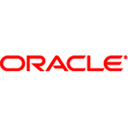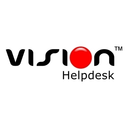Help Desk software: purchase guide
Help Desk Software: Streamline Support and Resolve Issues Faster
Help desk software gives your support team the structure and speed they need to stay on top of user requests—without drowning in emails or spreadsheets. Whether you're resolving internal IT problems, managing customer service inquiries, or delivering technical support to clients, a modern help desk system brings all interactions into one place, automates repetitive tasks, and tracks progress from open ticket to resolution.
If your team is juggling support tickets across inboxes or lacking visibility into what's getting done (and what’s not), it might be time to upgrade. Here’s how today’s help desk tools compare—and what to look for when choosing the right one.
Help Desk Software Comparison
| Software |
Key Features |
Best For |
Free Version |
Free Trial |
Demo |
Pricing Info |
| InvGate |
IT asset management, ticketing, reporting |
IT teams looking to combine help desk + asset tracking |
✔️ |
✔️ |
✔️ |
On request |
| Help Desk Premier |
SLA tracking, ticket automation, analytics |
Multi-channel support environments |
✔️ |
✔️ |
✔️ |
On request |
| Helpdesk Office |
Custom workflows, auto-replies, ticket assignments |
Teams needing easy setup with flexible customization |
✔️ |
✔️ |
✔️ |
On request |
| HelpDeskAdvanced |
Advanced routing, team dashboards, communication tracking |
Structured teams with escalations and approvals |
✔️ |
✔️ |
✔️ |
On request |
| Helpy |
Cloud-based ticketing, automation, SLA monitoring |
Small-to-mid teams needing quick deployment |
✔️ |
✔️ |
✔️ |
On request |
What can help desk software do for your team?
Bring all tickets into one place
Instead of jumping between inboxes or chat apps, help desk software funnels every support request into a centralized dashboard—no matter where it comes from.
Pull in tickets from email, forms, or chat.
Tag and categorize requests instantly.
Track status and response history in one thread.
Use case: An IT team fields hardware requests, password resets, and access issues—all tracked and assigned from a single interface.
Automate the routine, focus on the real problems
Let the system handle repetitive tasks like assigning tickets, sending status updates, or escalating overdue issues.
Set rules to route tickets by type or urgency.
Auto-notify agents and users on key status changes.
Escalate tickets if SLAs are in danger of being missed.
Use case: A customer service team automatically routes payment-related inquiries to billing, while product bugs go to engineering—with different response-time targets.
Keep your SLAs on track
Service level agreements (SLAs) are critical for accountability—whether it’s internal IT or client-facing support. Help desk tools monitor time-sensitive tasks so nothing slips through the cracks.
Define time targets per ticket type or priority.
Get real-time alerts when deadlines are at risk.
Report on SLA compliance over time.
Use case: A managed service provider tracks all urgent client tickets against a 4-hour SLA and gets automatic warnings for anything at risk of running late.
Get visibility with dashboards and reports
Stop guessing what your team is working on. Help desk analytics turn raw data into insights you can actually use.
Track response time, ticket volume, and resolution rates.
Spot bottlenecks or categories that need attention.
Export reports to share with management or clients.
Use case: A support lead reviews weekly metrics to see that 40% of all tickets are related to onboarding—and builds a better guide to deflect those requests.
Empower users with self-service
Many platforms offer knowledge bases and help centers, letting users resolve common issues on their own—before opening a ticket.
Link help articles to ticket forms automatically.
Track which topics reduce tickets the most.
Keep internal and external knowledge separate.
Use case: A software company cuts ticket volume by 30% with a searchable help center that answers common installation and configuration questions.
Is help desk software right for you?
If you're dealing with repeatable issues, growing request volume, or SLAs that must be met, yes. Help desk software is built for any team that delivers structured, trackable support:
Where it fits:
Internal IT desks resolving access and hardware issues for staff.
Customer service teams answering product, billing, or order questions.
Managed service providers (MSPs) delivering SLA-based client support.
Universities and municipalities offering digital support to users or citizens.
Steps to get started:
Map your ticket lifecycle: How requests come in, get triaged, escalated, and resolved.
Define your team roles: Agents, admins, team leads—who needs what access?
Organize your categories and SLAs: Standardize how tickets are labeled and timed.
Connect your inboxes and forms: Funnel everything into one system.
Test automation rules: Make sure routing, notifications, and escalations work as expected.
Train the team: Show agents how to manage their queues, document resolutions, and meet performance targets.
Why invest in help desk software?
Here’s what teams consistently gain when they switch from informal systems to structured help desk tools:
More control: Every request is tracked, assigned, and followed up—no more lost tickets.
Faster service: Automation cuts manual steps and keeps things moving.
Better accountability: SLAs and dashboards help managers stay ahead of issues.
Happier users: People get clear updates and faster responses.
Actionable data: Reports reveal patterns so you can continuously improve.
When implemented well, help desk software becomes more than just a ticketing tool—it’s your frontline operations engine. It keeps support organized, your team accountable, and your users confident that someone’s got their back.



















